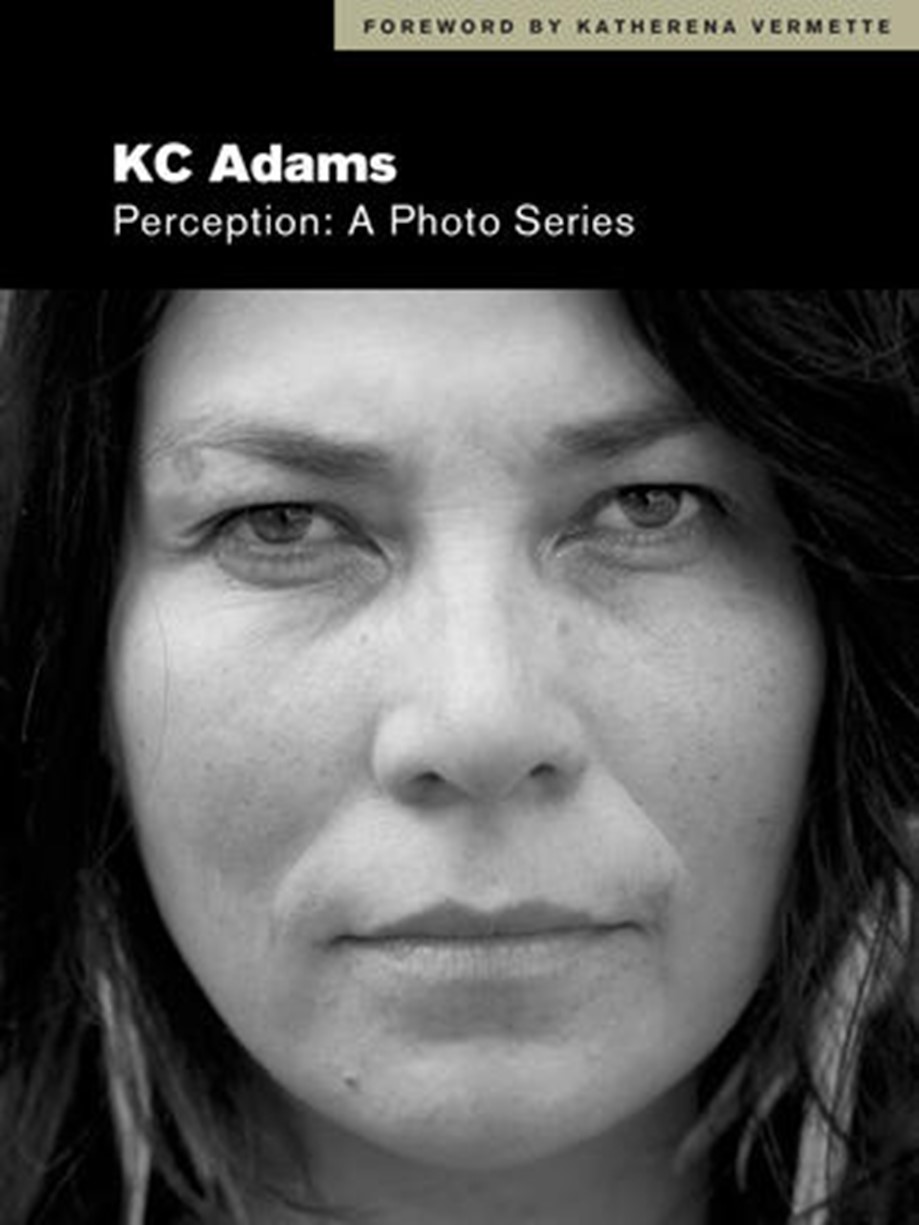
How can you use photography and graphic design to change negative points of view?
Inspired by the public artwork of KC Adams, a Grade 9 Information and Communication Technology class embarked on a journey of changing perspectives.
KC Adams is an Anishinaabe, Ininew, and British woman from Winnipeg. She identifies herself as a “relational maker, a creator whose work connects to Indigenous knowledge systems of relationality––recognizing my role as an educator, activist, community member and mentor,” and says about her art, “I create work exploring technology and its relationship to my Indigenous identity. My process is to start with an idea and use a medium that embodies my conceptual intent. I work in adornment, clay, drawing, installation, painting, photography, printmaking, public art, video, AR, and VR.” (See KC Adams.)
In an opening discussion, the teacher asked these questions of learners in small groups: When we think well of ourselves, how do we feel? When we think poorly of ourselves, how do we feel? After some conversation, the groups discussed statements that someone would make about themselves if they were in a negative frame of mind. The learners were then tasked to change the negative perspective. One example of such a statement was, “My friends think I’m weird because I put everything in my locker in alphabetical order.” Collectively, learners agreed that this could be seen as a positive trait because the person is very organized.
After the class debriefed, the teacher showed a portion of the artwork Perception by KC Adams, highlighting Leona Star. In a classroom discussion that ensued, learners voiced that not all perceptions are our own—and some are steeped in discrimination and racism.
The next day, the learners were told that KC Adams would be joining them as a virtual guest speaker. They talked about open-ended questions (or questions that are not “googleable”) and closed, or quickly answered, questions. They spent the class researching and crafting questions for KC. In pairs, learners would practise asking their questions and, if their partner could find the answer themselves, then it would not be asked the following day.
The virtual guest speaking day was very positive, and learners were able to ask many well-formed questions of KC and her work as an artist and educator—in particular, her artwork related to Perception. (She also has an explanation of her work on YouTube at Perception KC Adams - YouTube.)
The following day, learners embarked on their own version of Perception. Individually, each student was asked to produce two pieces that combined an image and words—one that shows the negative ways the learners see themselves or how others might see them without knowing them, and one that shows how learners truly are. Each learner included an artist statement to explain their thinking about their art.
At the beginning of the project, each learner had a conference with the teacher to determine a direction. If learners had an idea, it was a way for them to have a detailed conversation about their direction. If a learner was unclear on what to do, the teacher could help them set a direction by reflecting on their experiences and personal decisions.
Halfway through the project, learners picked another learner with whom they would share their work. They were reminded to seek to understand each other’s messages through observation, active listening, and questioning. Each of the pair had to respond to three prompts about the other person’s work that took into consideration both the art pieces and the artist statement: 1) what they thought the changed perspective was; 2) what part of the image they did not understand; and 3) what questions they still had. Their initial work to form questions helped to support this process. After these feedback sessions, learners were able to reflect on others’ feedback for improvement.
Once learners had time to incorporate the feedback from their peers, they set up their artwork so a gallery walk could occur. Learners walked around with sticky notes and wrote affirming words in support of each other’s work. Each learner needed to give specific and positive feedback to five of their peers. When prompted to reflect on how the affirmations felt, learners agreed that communication strengthens community.
KC Adams. Home page. Accessed 6 Dec. 2024.
———. Perception: A Photo Series. HighWater Press, 2019.
Urban Shaman. “Perception KC Adams.” YouTube, 25 May 2015. Accessed 6 Dec. 2024.